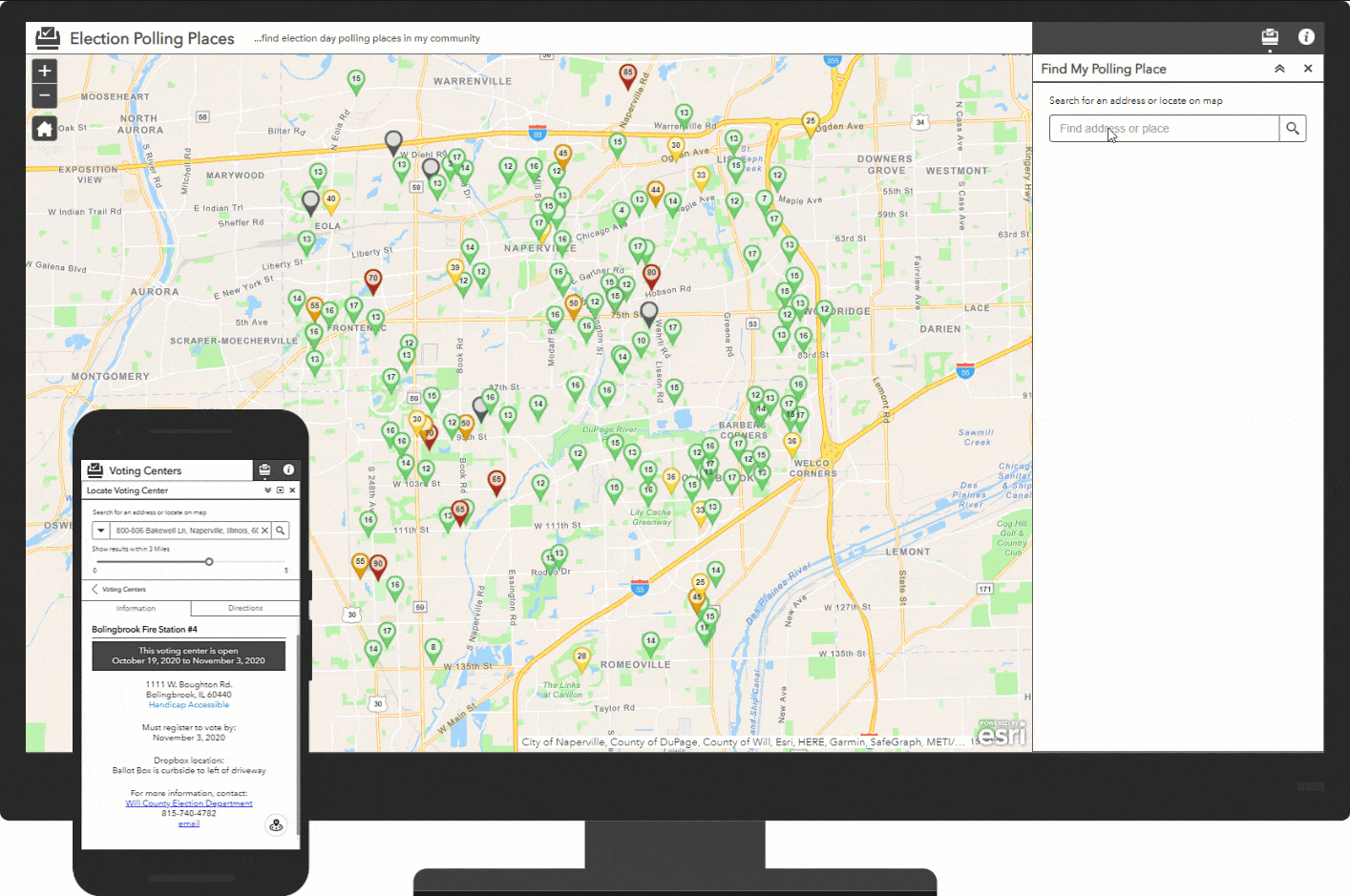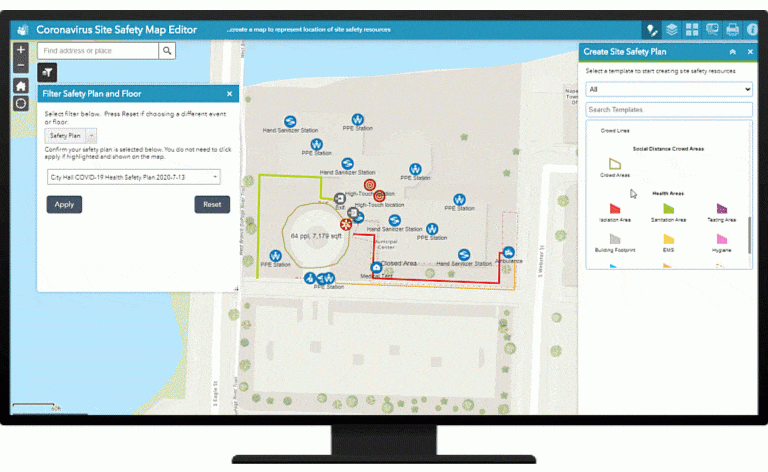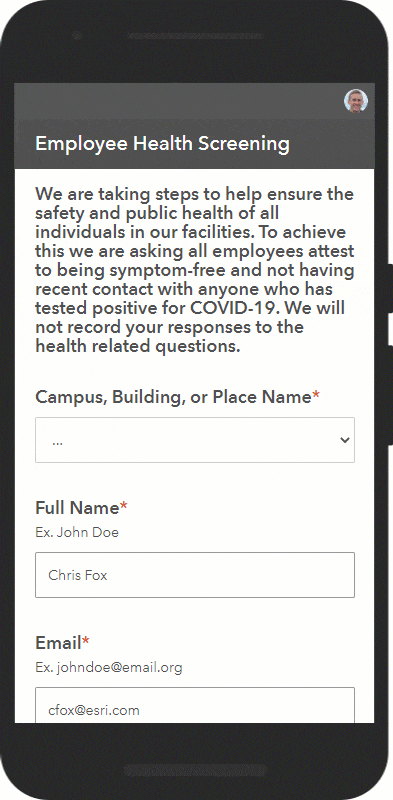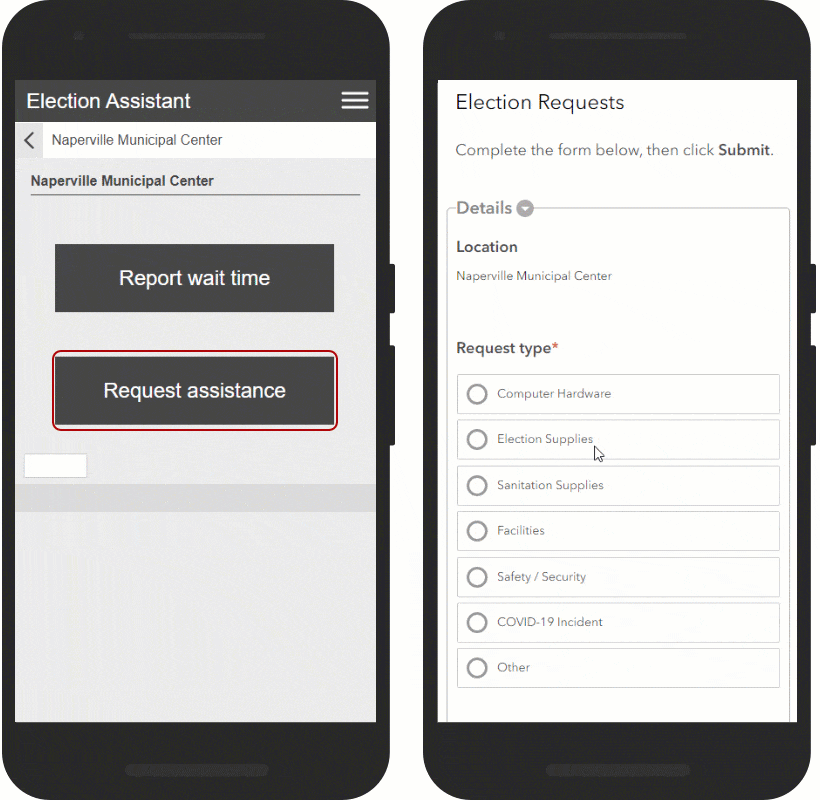Election officials across the United States are preparing for an unprecedented general election this November. The coronavirus (COVID-19) pandemic has introduced new safety concerns for voters and poll workers, and officials are devising plans that minimize personal contact, reduce crowds, and limit common access to high-touch surfaces.
Recently, the Centers for Disease Control and Prevention (CDC) has made several recommendations designed to protect the health and safety of the community and reduce the risk of coronavirus spreading at polling places and voting centers. The CDC’s recommendations promote:
- A wide variety of voting alternatives that minimize human contact,
- Health safety plans that protect voters and poll workers,
- New election day policies and procedures that reduce the number of voters gathering at polling places, provide protective measures that minimize the spread of the coronavirus, and ensure the integrity of an election.
Today, ArcGIS users can deploy a series of solutions designed to help their community conduct safe elections during the COVID-19 pandemic. You can deploy the solutions as a comprehensive system that can be used to promote voting options, develop health safety plans, and manage election day activities. Or, select an individual solution that meets your community’s specific needs.
Promote Voting Alternatives
Typically, voters must cast their ballots in person, at a polling station, and most often on a single day. This election practice is the primary public health threat that has arisen during the COVID-19 pandemic. To reduce crowding at polling places, many states are changing voting policies and providing voters alternative ways to cast their ballot in the November election. The policy changes allow “no-excuse” absentee voting and provide additional drop box locations to accommodate the increase in absentee voting. Election officials must now communicate new voting options to the electorate and assure voters they can cast a ballot in a safe environment.

The Election Outreach solution can be used by election officials to educate the public and communicate voting alternatives. It can be used to promote new voting policies and recently established voting centers or drop box locations. In addition, health safety plans and wait times for each polling place can be accessed by voters that decide to cast their ballot in person on election day.
Create Health Safety Plans
While many election officials are planning for an increase in absentee voting, strong voter turnout expected in the general election is forcing officials to develop plans that mitigate the risk of COVID-19 spread. Voters standing in line close to each other, handling ballots and using touch screens increases the risk of community transmission of coronavirus (COVID-19).
To mitigate that risk, election officials are creating health safety plans for polling places and voting centers that include.
- PPE and hand sanitizer stations for voters and poll workers,
- Queuing lines, or areas, that promote social distancing,
- Outdoor spaces for voters to congregate when a polling place has reached capacity,
- Regular cleaning schedules for high-touch surfaces

The Coronavirus Site Safety solution can be used by election officials to create coronavirus health safety plans with preventative measures that reduce the risk of community transmission and promote a safe election day voting experience. Coronavirus health safety plans (for example, handwashing or sanitizer stations, personal protective equipment (PPE) stations, queuing lines, isolation areas, etc.) can be created for each polling place or voting center. Once complete, the plans can be shared with poll workers, voters, and other stakeholders to increase confidence in election day voting.
Manage Election Day Activities
The elections office is often the smallest agency in a government until Election Day, when it often becomes the largest. According to the 2018 Election Administration and Voting Survey (EAVS) report released by the U.S. Election Assistance Commission (EAC) more than 200,000 polling places were opened and staffed by more than 600,000 poll workers in 2018. And the COVID-19 pandemic has added another level of complexity to the management of this temporary workforce for many election officials.
Most poll workers are volunteers or part-time, temporary employees hired by local election officials to staff polling places or voting centers during early voting and on Election Day. Ensuring this temporary workforce is not exhibiting COVID-19 symptoms when they report on election day is critical to preventing the spread of the coronavirus.

The Coronavirus Health Screening solution can be used by election officials to conduct coronavirus (COVID-19) health screenings before poll workers are permitted to enter a polling place or voting center. It can be used to self-report coronavirus symptoms or contact, record the result of a temperature check, and track who was permitted to enter a facility, or location, on a given date.
Issues with computer hardware, facilities, or supplies (for example, ballots, pens, pencils) may impact the time it takes to vote and larger plans to ensure that social distancing requirements are met at a polling place or voting center. In addition, the COVID-19 pandemic is requiring election officials to stock polling places with other supplies like PPEs and hand sanitizers. Ensuring COVID-19 specific supplies are well stocked and resolving issues that may impact wait times on election day is imperative.
The Election Management solution can be used to manage voting center or polling place requests, report wait times, and monitor election day performance. Office staff can review requests submitted by poll workers and assign field workers to quickly resolve the request. Field workers can access their assignments on a mobile device and update, or complete, the assignment when the issue has been resolved.

Tracking crowd counts and wait times on election day helps election officials understand where voters may be gathering at polling places and potentially compromising social distancing plans. The Coronavirus Site Safety solution includes a Crowd Counter application that can be used by poll workers to track voters as they enter and exit the polling place. This voting queue can be translated into a wait time and regularly reported by poll workers with an application included in the Election Management solution called Election Assistant.

Wait times can be monitored by election officials to ensure health safety measures are being met. The same wait times can be shared with the general public using applications included in the Election Outreach solution. Communicating wait times to voters helps reduce congestion at polling places or voting centers and allows voters to decide when they want to safely cast their ballot.
Additional Resources
Election Outreach, Election Management, and Coronavirus Site Safety are part of larger collection of ArcGIS Solutions that will help your organization administer transparent elections and respond to, and recover from, the coronavirus (COVID-19) pandemic.
Learn more about the solutions and how you can quickly deploy these solutions on the ArcGIS Solution site. More detailed configuration ideas and instructions can be found in the Configuring ArcGIS Solutions to conduct safe elections during the COVID-19 pandemic GeoNet post.
Finally, Esri is providing several resources to help organizations combat the coronavirus. The COVID-19 GIS Hub is the place to access additional resources and to request GIS assistance from Esri. For questions and feedback, chat with us on GeoNet or contact Esri Support Services.

Article Discussion: